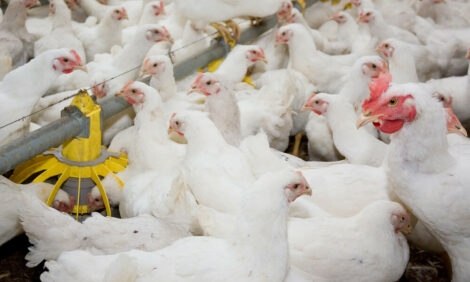



Weekly Outlook: USDA Reports
URBANA - Two upcoming USDA reports will set the state for prices during the spring months, said a University of Illinois Extension marketing specialist."The USDA's monthly update on world crop supply and demand prospects released on March 9 contained few changes from the February report," said Darrel Good. "The quarterly Grain Stocks and Prospective Plantings reports will set the stage for prices during the spring months."
The USDA's World Outlook Board made no changes in March in the forecasts of consumption and ending stocks of U.S. corn, soybeans, and wheat for the current marketing year. There was some expectation that the forecast of the domestic soybean crush would be increased slightly based on the pace of crush from September 2006 through January 2007.
"The forecast of the marketing year average farm price of soybeans was increased slightly," said Good. "The midpoint of the forecast rage is $6.30, compared to a forecast of $6.20 in February."
For wheat, the USDA made a small reduction in the estimated size of the crop in the European Union and a more substantial increase in the estimated size of the crop in India. Still, world stocks of wheat at the end of the current marketing year will be significantly smaller than stocks at the beginning of the year.
For corn, the USDA increased the estimated size of the Brazilian crop by about 80 million bushels. That crop is now forecast at almost 1.9 billion bushels, 15 percent larger than last year's crop and 37 percent larger than the harvest in 2005.
Brazilian exports are forecast at 256 million bushels, 90 million more than exported last year. The estimated size of the current Argentine corn crop was increased by 20 million bushels. At 846 million bushels, the crop is expected to be 36 percent larger than the 2006 harvest. Argentine exports are forecast at 550 million bushels, 160 million more than exported last year.
"The sharp increase in South American corn exports along with prospects for a recovery in world wheat production and higher corn prices point to some softness in U.S. corn exports beginning this summer," said Good. "A slower pace of exports, along with a further decline in domestic feed use, will make additional quantities of corn available for ethanol production."
For soybeans, the USDA increased the estimated size of the current Brazilian harvest by 37 million bushels. At 2.094 billion bushels, the 2007 harvest is expected to be 3.6 percent larger than the record harvest of 2006. At 1.617 billion bushels, the Argentine crop is expected to be 8.6 percent larger than the 2006 crop. Production in all of South America is forecast at 3.985 billion bushels, 233 million larger than the 2006 harvest.
"A continuation of relatively high soybean prices into July and August would likely trigger a significant increase in South American soybean acreage for harvest in 2008," said Good.
The March 1 Grain Stocks report to be released on March 30 will provide information on the domestic rate of corn consumption during the second quarter (December 2006-February 2007) of the marketing year. Based on Census Bureau and USDA estimates, corn exports during the quarter were near 528 million bushels.
"If domestic use progressed at the rate forecast by the USDA, total domestic use during the quarter should have been near 2.41 billion bushels," said Good. "Under those circumstances, March 1 corn inventories should have been just under six billion bushels, about one billion less than stocks of a year earlier."
Anticipating the estimate of the March 1 inventory of soybeans is complicated by the lack of the Census Bureau estimate of the domestic crush for February and by the inconsistent seasonal pattern of "residual" use of soybeans, Good noted.
"Exports for the quarter were near 389 million bushels and we estimate the domestic crush at 454 million," he said. "If 'residual' use during the first half of the year followed the average pattern of the past three years, use during the second quarter was near 59 million bushels. If so, stocks on March 1 should have been near 1.795 billion bushels."
The March 30 Prospective Plantings report will likely overshadow all other price factors into the planting season, Good said.
"Plans for a large decline in soybean acreage and a larger increase in corn acreage are expected to be revealed in the report," he said. "If planned acreage of either crop is judged to be too small or too large, the market will have three to four weeks to try to alter production plans. Last year, for example, the March report revealed intentions to increase soybean acreage by 4.863 million acres and to reduce corn plantings by 3.76 million acres.
"The market judged that to be too large a shift so that prices adjusted. However, the price adjustment was not large enough and did not persist long enough. Soybean planting increased by 3.49 million acres and corn plantings declined by 3.452 million acres in 2006. If a significant change from intentions is judged to be needed this year, price changes will have to be more decisive."









